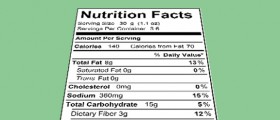
Allergic reaction to MSG
SG, also called monosodium glutamate or sodium glutamate, consists of a sodium molecule connected to a glutamic molecule. SG is the sodium salt of glutamic acid, a non-essential amino acid. Certain forms of MSG are used as a flavoring device and a widespread food additive largely included in Asian cuisine.
MSG is often utilized in Japanese cooking (named Ajinomoto) and Chinese food. Marketed under the moniker ’’Accent’’ MSG is frequently utilized as a flavor addition in North America. It is also placed in canned foods, processed meat, soups and similar products. It is created from sugar cane molasses or sugar beet.
MSG allergy is a reaction to various combined ingredients, or to monosodium glutamate on its own. The validity of MSG allergy diagnosis is disputed, with its symptoms assigned to food intolerance or sensitivity. If there is a case of certain food ingredients causing allergy, a protein that the body considers dangerous has to be a part of it. Symptoms of food allergy occur when the immune system spawns antibodies to combat the proteins, mistaking them for foreign bodies and causing a reaction. No bodies of that type are released in the case of MSG.
Glutamic acid, of which MSG is a salt of, is a neurotransmitter and functions by arousing the nerve cells, sense of smell, taste and can sometimes cause hunger. Like alcohol or caffeine, it has varied effects on various people. The neurotransmitters in MSG are able to of overexcite the nervous system in certain people, causing an increase in histamine levels in the blood, producing symptoms akin to allergy. MSG is also able to worsen allergies to other foods, increasing an allergic reaction to soy. This process is often named Chinese restaurant syndrome.
MSG Allergy Symptoms
Symptoms of MSG allergy include a feeling of burning on the shoulders, torso, thighs, arms and neck, chest pain or palpitations, sub-sternal discomforts or a numb feeling in the vicinity of the mouth. Others include a feeling or swelling on the face, nausea and vomiting, flushing, perspiration, wheezing and headaches. Most of these symptoms occur within an hour of consuming MSG infused food, and dissipate within two to three hours after.
MSG was marked as a "generally recognized as safe" food additive in 1959, in the Federal Food, Drug, and Cosmetic Act. According to research performed in the 1980s, glutamate has a big part in the regular functioning of the nervous system. This research, combined with people reporting various negative side effects after consuming MSG, caused controversial results. The overall conclusion however remains that MSG is safe when absorbed in normal amounts. A more in depth research was performed by the FDA and FASEB in 1995, concluding that MSG cannot be connected with any long term illness or disorder. The report identified the MSG Symptom Complex (short term reactions), categorizing the sufferers into two groups: The first are people who get symptoms when absorbing large amounts of MSG (3gm or more per meal), the second are individuals with dire and badly controlled asthma.
Antihistamines, corticosteroids, epinephrine are applied only if the symptoms of MSG do not dissipate on their own, which they usually do. An MSG allergy diagnosis by an allergist leads to an avoidance of all foods with MSG contained. All food labels must contain a MSG amount on them.

















Your thoughts on this
Loading...